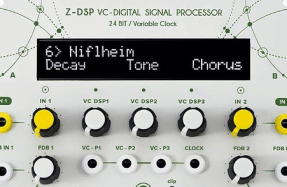MASTER BUS FX

When we think of master bus processing, a few things come to mind – mainly EQ and dynamics plugins, level/stereo meters and spectral analysis tools. However, by treating your DAW’s stereo output as a sacred zone, you’re restricting your creativity no end. Dare to deploy more innovative processors on your two-bus channel, however, and you’re guaranteed to unlock new worlds of creative possibilities – both sonically and structurally.
Consider modern-day disc jockeys, who rock clubs and festivals by mashing up ready-made tunes using only a pair of turntables and a handful of mixer effects.
Rudimentary crossfader chops, heavy-handed filter sweeps and crude jet-plane ‘whooshes’ can all elicit huge responses from crowds, and by embracing these restrictive techniques within
You’re reading a preview, subscribe to read more.
Start your free 30 days

